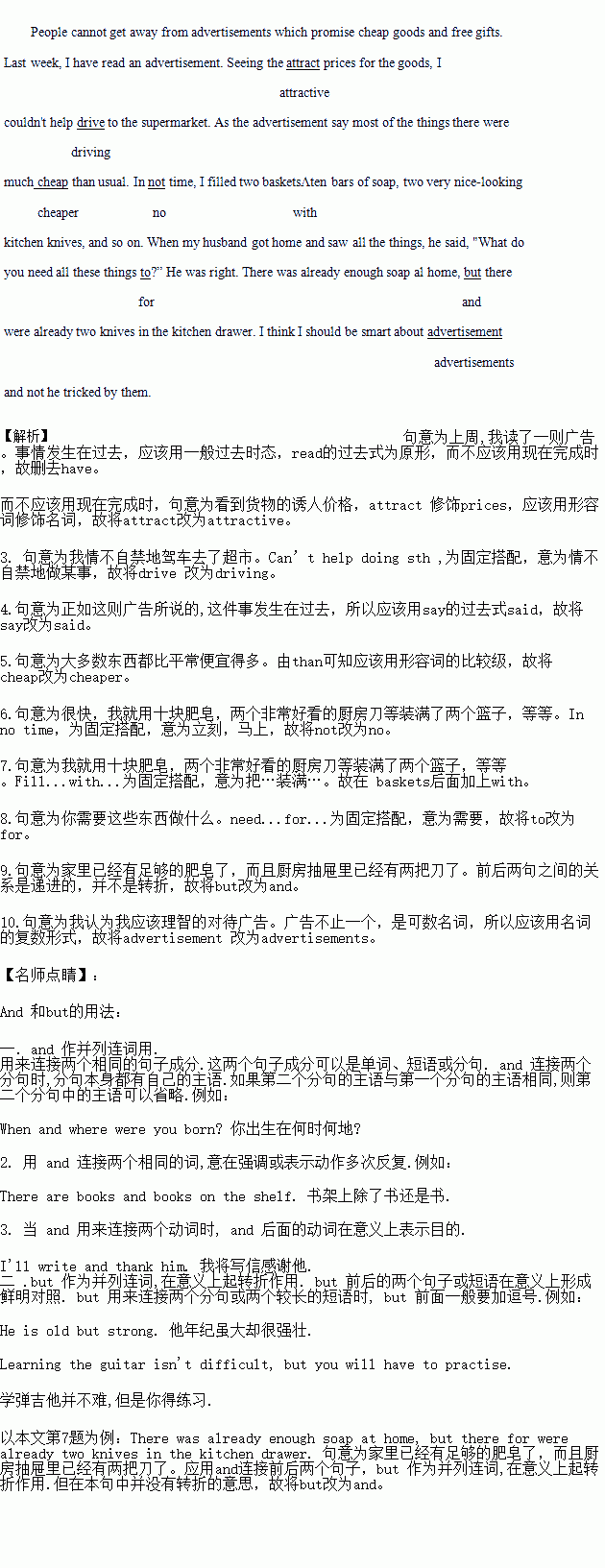��Ŀ����
�ٶ�Ӣ�������ʦҪ��ͬ��֮�佻�������ģ���������ͬ��д���������ġ����й���10�����Դ���ÿ���������������ÿ��������漰һ�����ʵ����ӡ�ɾ�����ġ�
���ӣ���ȱ�ʴ���һ��©�ַ���(��)����������д���üӵĴʡ�
ɾ�����ڴ��Ĵ��»�һ���ߣ����ڸô�����д���ĺ�Ĵʡ�
ע�⣺1��ÿ���������ľ�����һ�ʣ�
2��ֻ������10��������(�ӵ�11����)���Ʒ֡�
People cannot get away from advertisements which promise cheap goods and free gifts. Last week, I have read an advertisement. Seeing the attract prices for the goods, I couldn't help drive to the supermarket. As the advertisement say most of the things there were much chea than usual. In not time, I filled two baskets ten bars of soap, two very nice-looking kitchen knives, and so on. When my husband got home and saw all the things, he said, "What do you need all these things to?�� He was right. There was already enough soap at home, but there for and were already two knives in the kitchen drawer. I think I should be smart about advertisement and not he tricked by them.

